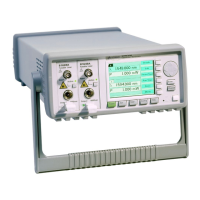8163A/B, 8164A/B, 8166A/B User’s Guide 225
Setting Attenuation and/or Power Levels 8
Calibrating Test Setups that use an 81570A/71A/73A/78A Attenuator module
Requirement for Calibration
P
SET
is a relative measurement that is meaningful only after your test setup
has been calibrated against a reference powermeter.
Preconditions
• To make the calibration as quick and simple as possible, host your
reference powermeter in the same mainframe as the Attenuator
module, as described in Hosting a Reference Powermeter on page 217.
• Before taking a power measurement, make sure the source is warmed
up so that its power output is stable.
• It is good practice to zero the reference powermeter before calibrating
your test setup. Refer to How to Remove Electrical Offsets on page 106.
Calibration Procedure
To calibrate a test setup that utilizes an 81570A/71A/73A/78A Attenuator
module, first measure the power applied by your test set up to the DUT
input, then store this value as the Attenuator’s P
ref
parameter.
After calibration, you edit the Attenuator’s P
SET
parameter to set the power
applied to the DUT.
1 Disconnect the DUT input in your test setup and connect it to your
reference powermeter.
• Set the λ parameter for the reference powermeter to the source
wavelength or, for a multi-wavelength DWDM signal, the effective
wavelength
λ
effective
• Set an appropriate measurement <Averaging Time>.
2 Display the details screen for the Attenuator module.
Make sure the
l parameter set for the Attenuator module matches the
source wavelength or, for a multi-wavelength DWDM signal,
λ
effective
.
3 If the reference powermeter is hosted by the same mainframe as the
Attenuator module:
• Select the P
ref
field,
• Press the [PM-> ref ] softkey,
• Select the channel used to host your reference powermeter,
• Press [OK].
The power value measured by your reference powermeter is copied to the
Attenuator and stored as P
ref
.

